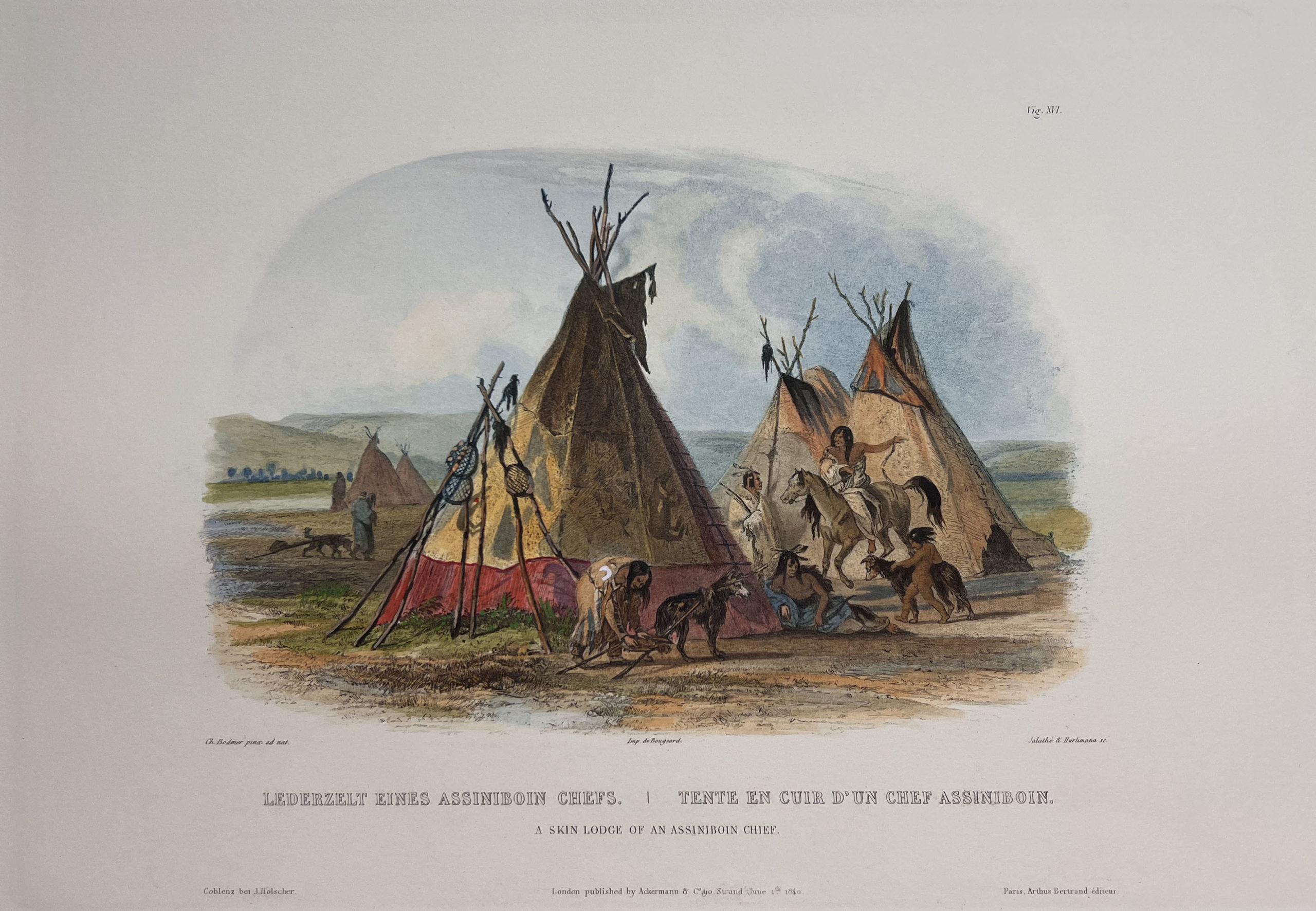2 in stock
Vignette
Pulled from the original steel and copper plates, engraved in Paris between 1836 and 1843 under Karl Bodmer’s direction, after the artist’s own watercolours drawn from nature during the journey.
The engravings are hand-printed in colours, à la poupée, with extensive hand-colouring and some application of gum arabic, in the nineteenth-century manner.
Engraved jointly by Salathe and Hurlimann; printed by Alecto Historical Editions.
At the Assiniboin camp near Fort Union early in July, 1833, Bodmer made a drawing of the tent or tipi of an Assinboin chief which he later developed as a watercolor and subsequently reproduced as a print. One of approximately twenty-five tipis which had been set up near the fort, the chief’s dwelling was clearly distinguished from the others by the figure of a bear painted on its side representing “strong medicine” associated with the curing of the sick and success in warfare.
To the right of the entrance to the tent — or at left, as pictured here — several travois used in transporting small loads are seen stacked together. A number of figures engaged in various activities animate the scene, providing a sense of camp life somewhat lacking in the watercolor in the Joslyn collection.
Prince Maximilian and his party remained at Fort Union until July 6, when they departed by keelboat for Fort McKenzie, another of the American Fur Company’s trading depots on the upper Missouri, in what is now west-central Montana.
In the published version of this subject, the tipis at right stand in closer proximity to the chief’s lodge than in the earlier watercolor. The dog in the center foreground of the print, shown harnessed to another travois, appears in the watercolor without the travois.
The woman seen bending over this dog, in the print, seems to have been taken from another of Bodmer’s watercolors at Joslyn depicting a Sioux camp near Fort Pierre. The man on horseback and the child next to the dog, at right, likewise were added to the aquatint from other studies.
Such changes often occurred during the process of translating an initial drawing into a finished painting or print.
For other Assiniboin subjects, see Vignette XV and Tableaux 9, 12, 30, and 32 of this series.
Text by David Hunt, Director, Stark Museum, Orange, Texas, USA

